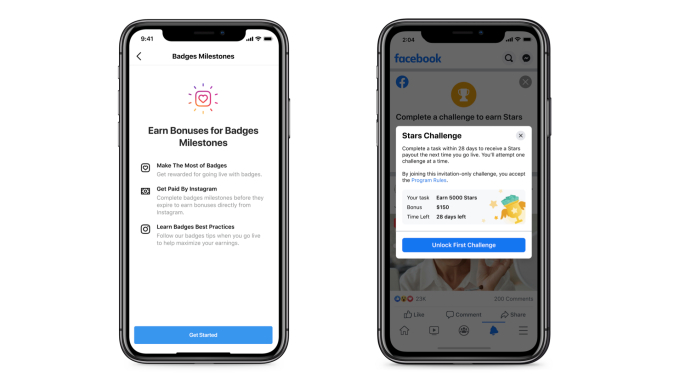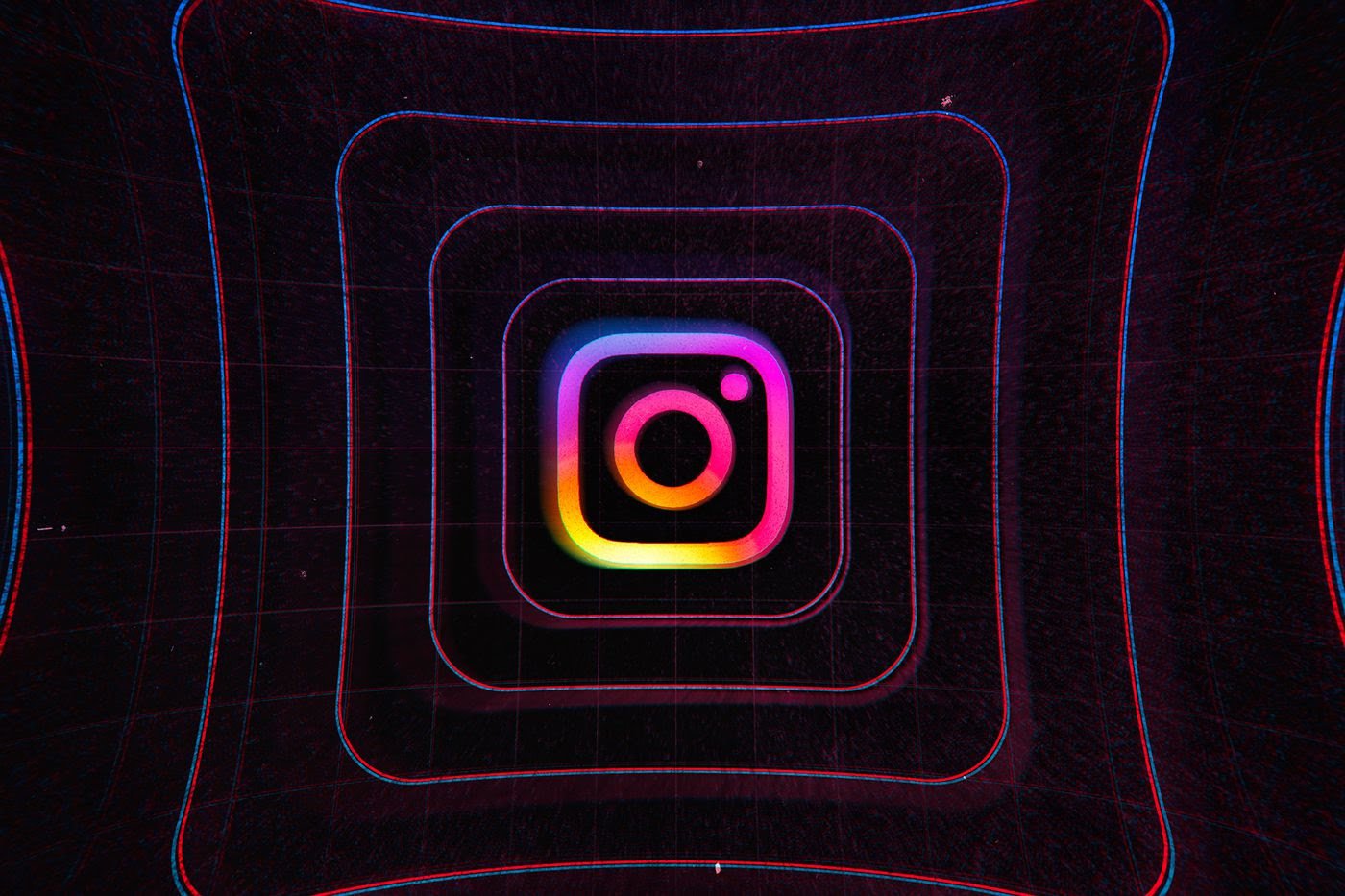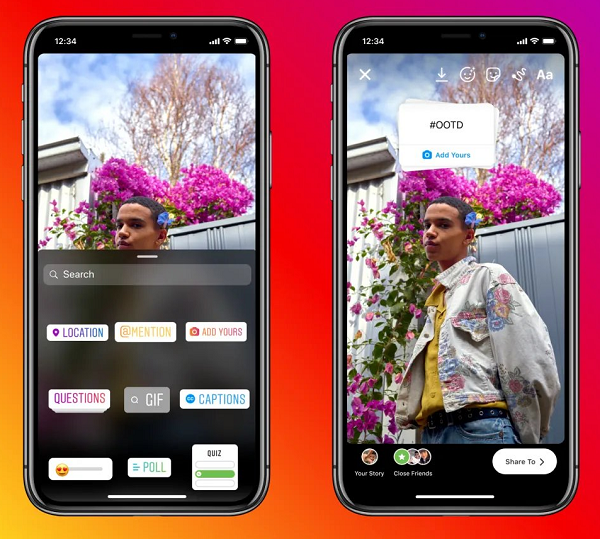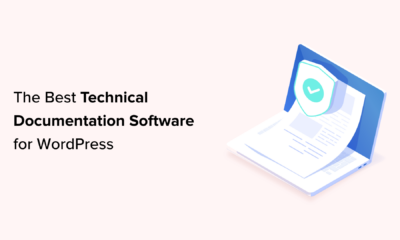Instagram adds affiliate and shop features for creators

As Apple hosts their annual Worldwide Developers Conference, Instagram and Facebook chose this moment to pilot their first-ever Creator Week. This three-day event is geared toward aspiring and emerging digital creators, complete with 9:45 AM virtual DJ sets and panels on “Algorithm Mythbusting” and raising “zillions for a nonprofit you care about.”
During the first day of the event, Mark Zuckerberg made an announcement introducing new ways for creators to make money. In the coming months, Instagram will start testing a native affiliate tool, which allows creators to recommend products available on checkout, share them with followers and earn commissions for sales their posts drive. When creators make these posts, the text “eligible for commission” will appear beneath their username in the same way that sponsored content labels appear.
Available immediately, creators will be able to link their shops to their personal profiles, not just business ones. By the end of the year, eligible creators in the U.S. will be able to partner with one of Instagram’s merchandise partners (Bravado/UMG, Fanjoy, Represent and Spring) to drop exclusive product launches on the app.
During live Instagram videos, viewers can tip creators by sending them a Badge, which costs between $0.99 and $4.99. Facebook Gaming has a similar feature called Stars, in which one Star is valued at $0.01. Starting this week, creators can earn bonuses for accomplishing certain challenges, like going live with another account. In a promotional image, for example, Facebook offers a bonus of $150 for creators who earn 5,000 Stars, the equivalent of $50.
“To help more creators make a living on our platforms, we’re going to keep paid online events, fan subscriptions, badges, and our upcoming independent news products free for creators until 2023,” Zuckerberg wrote in a Facebook post. “And when we do introduce a revenue share, it will be less than the 30% that Apple and others take.”

Image Credits: Instagram
These updates mark the latest push by Instagram toward affiliate marketing and in-app shopping, like its redesigned Instagram Shop and Shopping in Reels, which debuted within the last year.
“Our goal is to be the best platform for creators like you to make a living. And if you have an idea that you want to share with the world, you should be able to create it and get it out there easily and simply — across Facebook and Instagram — and then earn money for your work,” Zuckerberg added during Creator Week.
Creators may be drawn to experiment with these affiliate and shop features, since for now, they won’t lose a cut of their profits to Instagram. But platforms like TikTok and YouTube offer monetization strategies that extend beyond e-commerce.
Last July, TikTok announced its $200 million TikTok Creator Fund, which allows popular posters to earn money from their videos. It’s unclear exactly how TikTok determines how much money to dole out, but it depends on the number of views, engaged views and other factors. In August 2020, the YouTuber-turned-TikToker Hank Green estimated that he would bring home about $700 from 20,000,000 TikTok views in one month, averaging to about 3.5 cents per 1,000 views.
Meanwhile, YouTube announced a $100 million fund last month for top creators on YouTube Shorts, its TikTok competitor. The platform pointed out that over the last three years it has paid $30 billion to content creators. Snapchat has been paying $1 million per day to creators on their own TikTok competitor, Spotlight.
For users who don’t have millions of followers, these creator funds might not pay the rent. Still, it offers an income stream based on views, outside of e-commerce or viewer tips. For now, Instagram can’t say the same.
Instagram adds “Text to Speech” and “Voice Effects” feature to assist content creators to …

Instagram has brought two new features “Text to Speech” and “Voice Effects” to its platform. These features are already present on Tiktok. According to Instagram, users who create reels will be able to use these new features to make the reels better.
After Tiktok was banned in India, Instagram added a feature called Reels on its platform to attract content creators, although even after this, Reels has not been able to garner as much popularity as Tiktok, keeping this in mind Instagram is adding features like Tiktok to the reels so that more and more content creators will get attracted to the reels.
Text to speech feature will allow giving artificial voice to text. On the other hand, if we talk about Voice effects feature then with the help of the Voice Effects tool, you will be able to modify the audio and voice-over. Using these features will also be very easy, you will get a total of five-voice effect options, with the help of which you can convert ordinary audio into artificial voice including Announcer, Helium, Giant, Robot, and Singer. After recording a reel, tapping on a music note in the audio mixer will take you to the Effects menu, where you can add different sounds to your reel. Users can leverage these features on iOS and Android devices. Further in this article we will know how we can use these features to make a perfect reel.
Step 1: First of all go to the Instagram app and open the Reels section.
Step 2. After that open Instagram camera tocreate a reel or upload it from the mobile gallery.
Step 3: Now to write new text, you have to go to the Text tool.
Step 4: After typing the text, tap on Text to Speech at the bottom.
Step 5: In this option, you will see different options of voice, out of which you can select the voice of your choice.
Instagram Launches ‘Add Yours’ Sticker to Facilitate More Engagement in Stories

Oh look, Instagram is once again following the lead of TikTok with a new feature, what an astounding surprise this is.
Today, Instagram has launched a new ‘Add Yours’ sticker for Stories, which enables users to prompt others to respond to their Stories content, in order to create more engaging reply threads to Stories posts.

As you can see here, now, users can add the new ‘Add Yours’ sticker to their Stories frame, with the example using an ‘outfit of the day’ prompt, calling for followers to respond with their own #OOTD image.

When users respond, they’re added to the profile bubble listing on the sticker, which, when tapped, enables users to go through all the other responses to the thread, building a response chain within Stories that can help prompt more engagement.
Which sounds a lot like TikTok’s Duet feature, which often sees many users adding to a Duet chain, creating long, interactive streams of content based on the original theme.
The engaging, community-based creativity of TikTok is a key element in its appeal, so it’s no surprise to see Instagram, once again, taking inspiration from its now key rival. But at the same time, it’s a bit much – Facebook’s repetition sometimes feels like it’s going too far to try and latch onto these usage trends.
I mean, it makes sense – TikTok is seeing huge engagement, and Instagram wants to hook into that wherever it can, in order to keep users from migrating away from its app, and if it can utilize similar functions, it probably should at least test and see what results it gets. But it’s a fairly obvious replication here.
Maybe it works, so who really cares? But still, Instagram, and Facebook (or Meta) more broadly, is not very good at coming up with new, original ideas in this respect.
Which will be a key impediment to its new push to win back younger audiences, with Facebook CEO Mark Zuckerberg recently noting that it will make serving young adults a priority in its products, rather than optimizing for older users. Facebook knows that it needs to maintain engagement with younger user groups to maximize take-up of its advanced, metaverse-aligned offerings, and the data shows that it’s losing on this front, with Facebook usage among people under the age of 24 declining over the past decade.

A key issue in this sense is that Facebook simply lacks cultural nous, and understanding what younger audiences respond to – which is why Snapchat is regularly able to spark and lead new trends, and now TikTok has become the main vehicle for the same. Instagram did once have that cultural presence, that direct line with creative online communities, but over time – since Facebook took over – it’s also lost touch. And while the graph above doesn’t relate to Instagram usage, you can bet that the same trends are likely happening on IG as well, hence the renewed focus from Zuck on younger groups.
Which is relevant here because of the replication. Yes, Facebook has seen success in stealing features from Snapchat and TikTok, to varying degree, with Instagram Stories being the key winner, while Reels has also been a hit for Instagram, even if usage still trails well behind TikTok. But it’s not helping Facebook win the broader cultural shift, Facebook is no longer seen as the innovator, it’s lost its cool factor in this respect, because of the constant replication.
Or maybe not because of this, but it’s an element in the wider shift – Facebook’s become very good at bringing these features to less web-savvy users who aren’t active in these other, newer apps.
But for those that are always across the next key trends – like, say, younger audiences – Facebook’s replication just seems stale and second rate. It’s the older people catching up on things behind everyone else, then telling you about this cool new feature that you’d already been using well before they came across it.
That’s the inherent failure in Facebook’s replication approach, that it constantly leaves it a step behind, rather than being a leader – and if it’s not a leader, it loses that cool cred, and younger audience engagement as a result.
So it might work, in a broader sense, in terms of deriving in-app engagement on the back of these usage trends originating from other apps. But really, it’s like the corporatization of these shifts, and unless Facebook can change things up, and start leading the way on some of these key trends, I don’t see how it’s going to win back the youth.
Instagram had been testing the ‘Add Yours’ sticker with some users over the past month, but it’s now being rolled out to all users globally, on iOS and Android.
Instagram For E-Commerce

Alright, let’s get this out the way. Millennials and Gen-Z have ruined everything. Now that that’s out of the way, we can get on to how they’ve changed the way e-commerce brands handle sales, marketing, customer engagement, and advertising.
We’ve seen and read enough articles online about how Millennials have ruined this industry, or that industry.
In all fairness, the way they’ve changed the e-commerce industry has had a quite positive impact for businesses and vice versa. Millennials and Gen-Z make up a majority of Instagram users, growing in their careers to have better purchasing power. In fact, a study (.pdf) has revealed that 81 percent of millennials are shopping online on a weekly basis.
What does that mean?
Essentially, with such a large number of shoppers online, it changes the way you’d handle e-commerce and retail. The pandemic and the waves of lockdowns have exploded the use and growth of online shopping.
If the pandemic has taught us anything, it’s how digital spaces have added value to businesses, helped companies stay afloat during these times, and how physical spaces aren’t always a 100 percent necessary to run your business. But rejoice! Because this does have quite a few positive implications for businesses.
All you need to look at is the recent trends in advertising and marketing on Instagram. The endless scrolling that Instagram users go through pretty much everyday exposes users to hundreds of ads, and the lines between posts and ads become quite blurred.
Sure, Amazon does have a firm grip in the e-commerce space, but while Amazon functions on a planned shopping model (where users pretty much know what exactly they’re looking for, and search for those products), Instagram relies more on impulse buying.
So while Amazon is established in the market, it lacks Instagram’s appeal of seamless advertising with the ease of online purchase.
Why Go Digital?
The pros of online shopping really do outweigh the cons. Yes, quite a few shoppers do love the experience of physically going to stores, actually seeing and trying out the products they’re buying, and speaking to a sales person to get more details of the product they’re buying.
However, with the rate at which e-commerce is scaling, businesses (and these platforms) are finding better ways of offering better online shopping experiences to customers. The most obvious pro is accessibility. Customers are no longer limited to shopping in stores specific to their city.
You no longer have to go through the disappointment of finding some great products and realising there are no stores in your city. In fact, it’s also become the case that you might find some great international brands as well, really love their products, and realise, “Yes! I can get this shipped to my place!”
According to ToughNickel, the biggest advantage is convenience. But besides the convenience, you have the bonus of not facing any undue sales pressure, wider variety, as well as easy comparison of prices to find the best deal for yourself.
While Instagram may not solve the problem of physical spaces and physically trying out products, it does solve the problem of making your business accessible online, and giving them another channel to shop.
Plus, with Instagram’s APIs now open, giving you the ability to build out chatbots and integrate with other apps, it solves the problem of communication, with chatbots being able to answer FAQs, give customers purchase options, instant information about their orders, and provide a seamless transition between chatbots and human interaction.
As mentioned earlier, the number of users on Instagram along with the impulse to buy stuff they come across randomly while scrolling makes Instagram one of the best spaces to be present in, especially considering the shift in shopping habits by the younger generation, regardless of whether you’re a new business or not.
Author:
Anish, Developer, Tellephant
-

 MARKETING7 days ago
MARKETING7 days agoRoundel Media Studio: What to Expect From Target’s New Self-Service Platform
-

 SEO6 days ago
SEO6 days agoGoogle Limits News Links In California Over Proposed ‘Link Tax’ Law
-
SEARCHENGINES7 days ago
Daily Search Forum Recap: April 12, 2024
-

 SEARCHENGINES5 days ago
SEARCHENGINES5 days agoGoogle Core Update Volatility, Helpful Content Update Gone, Dangerous Google Search Results & Google Ads Confusion
-

 SEO5 days ago
SEO5 days ago10 Paid Search & PPC Planning Best Practices
-

 MARKETING6 days ago
MARKETING6 days ago2 Ways to Take Back the Power in Your Business: Part 2
-

 PPC6 days ago
PPC6 days agoCritical Display Error in Brand Safety Metrics On Twitter/X Corrected
-

 SEARCHENGINES4 days ago
SEARCHENGINES4 days agoWeekend Google Core Ranking Volatility












